The small city of Toya-ko Onsen sits by the lake that fills the giant caldera of a long-dead volcano. From the shore, I make out the shape of the wooded island placed in its center, but the air is growing hazy.
Largely uninterested in trying out the onsen in one of the huge hotel complexes that constitute most of the city, I take the bus to the Nishiyama Promenade. There, I follow the path that passes by a crashed car and follows a dislocated road.
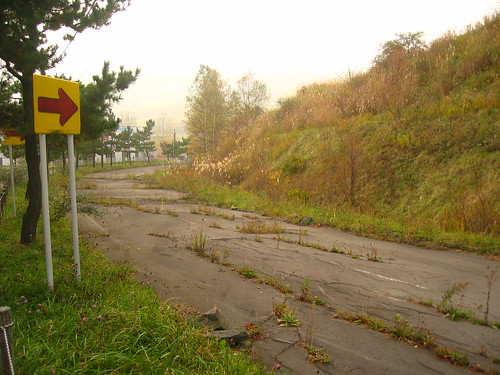
 Beware the right turn (and cracked road), by theefer
Beware the right turn (and cracked road), by theeferThe day has fully receded now, as if giving up in the middle of the afternoon, the sun nothing more than a pale disc behind the clouds. The yellowish, ghostly light is perfect to visit this neighborhood destroyed by the nearby eruption of Mount Usu in 2000.
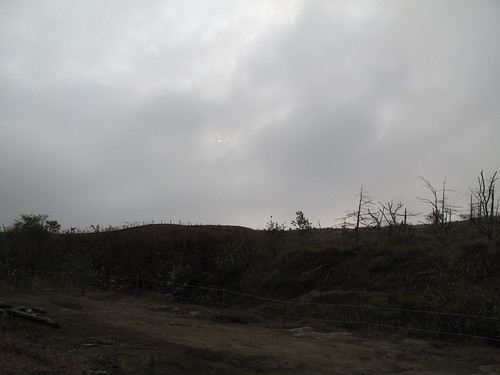
 Sun receding, by theefer
Sun receding, by theeferThere were no victims that time, as the preliminary earthquakes had warned the population early enough, but they preserved the road and houses the way they were after the disaster.
Craters abound and wooden trails circle them on their rim. Fumes still come out of the earth with a strong odor of sulfur. The main path then climbs down into the vegetation, yellow as if recently roasted or never healed. Sheaves of rusted metal strands emerge from fallen concrete pylons and get mixed with dry shrubs.
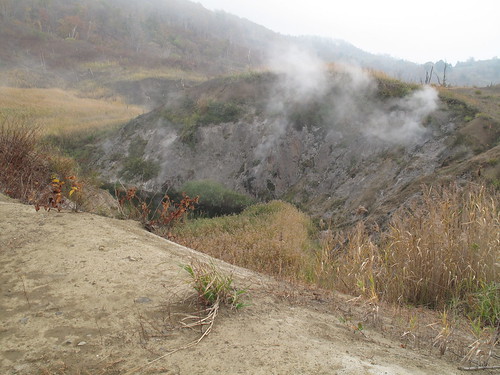
 Crater fumes, by theefer
Crater fumes, by theeferFarther along, I reach pieces of road again, all torn, cracked, wrinkled. The speed signs are still standing, as are the houses, though dangerously tipped or crushed like damaged cardboard models. A supermarket looks intact from afar but on a closer look, its walls don’t make right angles anymore, its floor seems uneven and the whole building is, in fact, noticeably tilted.
Few visitors walk this far. There is a feeling of displaced reality in the air, as if time has been suspended and the world played around with, shaken. Which it has, only eight years from now.
2000 was only the latest of many eruptions. After each of them the people came back, repaired or rebuilt, and went on with their lives. Rather than anger, a great respect for nature is observed.
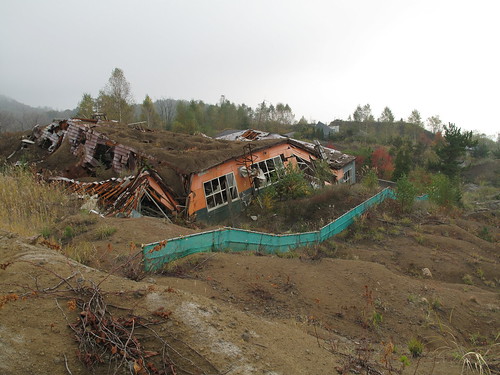
 Crumbled house, by theefer
Crumbled house, by theeferThis attitude, part bold perseverance, part blind stubbornness, seems particularly strong in Japan, a country regularly threatened by hurricanes, volcanoes and earthquakes. Likewise, they were also prompt to rebuild Hiroshima and Nagasaki after they were obliterated by atomic bombs.
While doubtlessly the result of a certain kind of pride, it also highlights a distinct absence of fear. People still live on the hillside of volcanoes, along hurricane-washed shores, or in a metropolis awaiting a gigantic earthquake in the next few decades. In an era where fear is being heavily exploited to control the masses (terrorism! global warming! collapsing economy!), it certainly comes as welcome.
The underlying wisdom here might be that disasters are bound to happen whether we fear them or not, so better live fully, and respectfully, while remaining ready to deal with the consequences.
That, and the fact that along with catastrophes come new marvels, such as onsen springs.
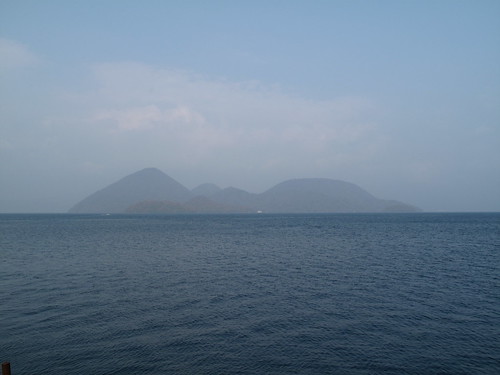
 Islands on Lake Toya, by theefer
Islands on Lake Toya, by theefer